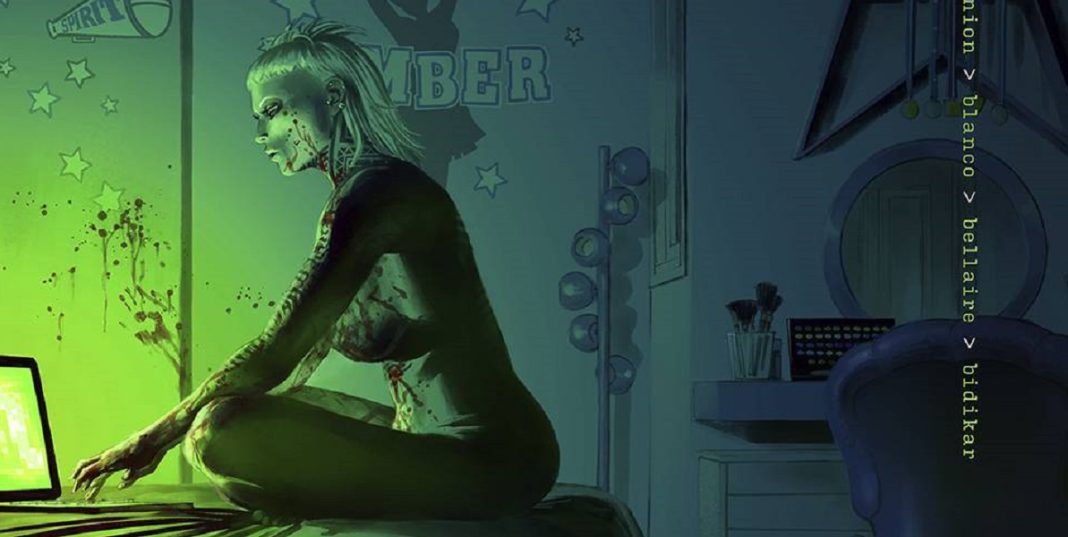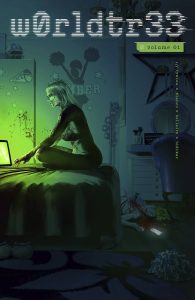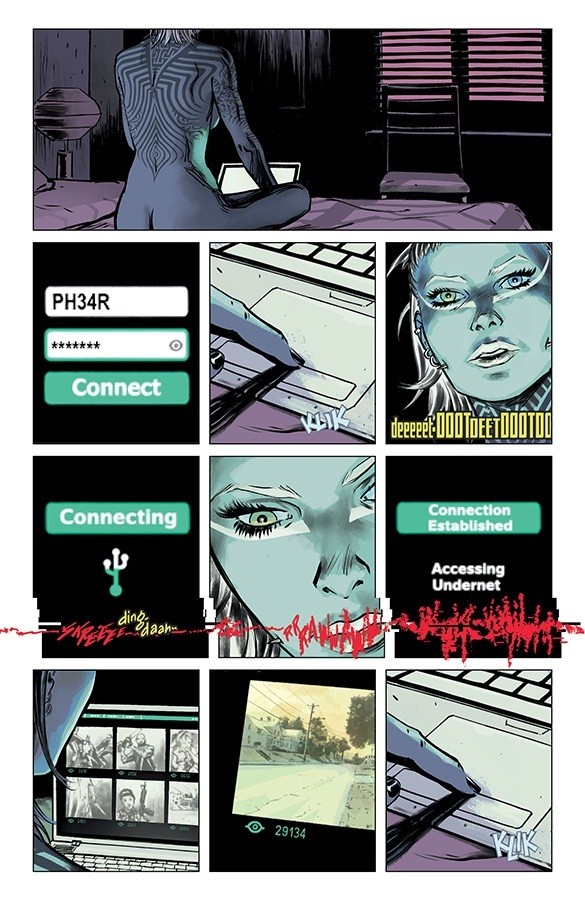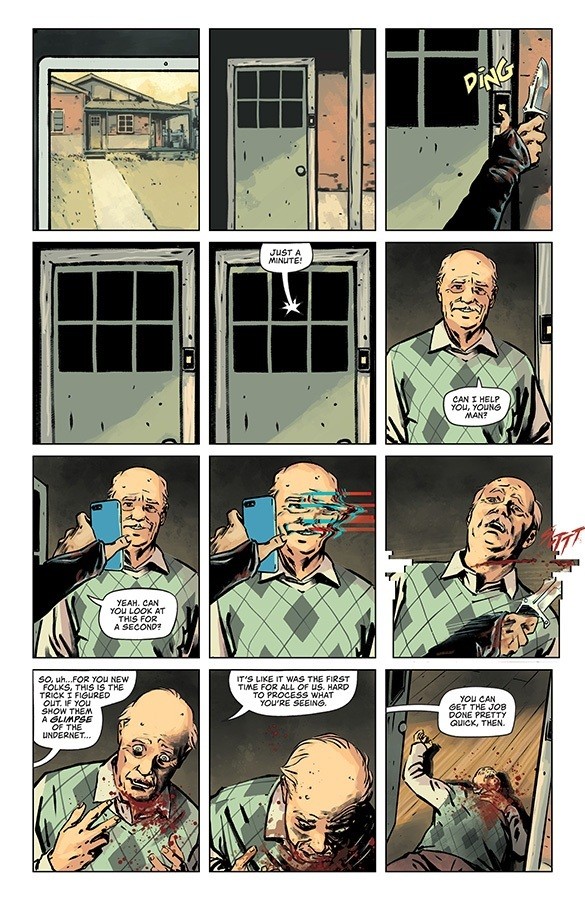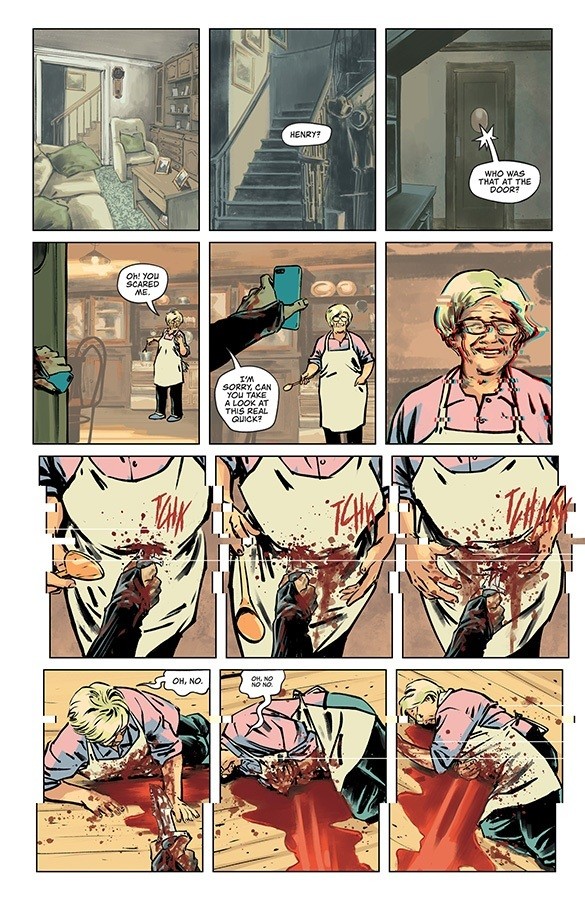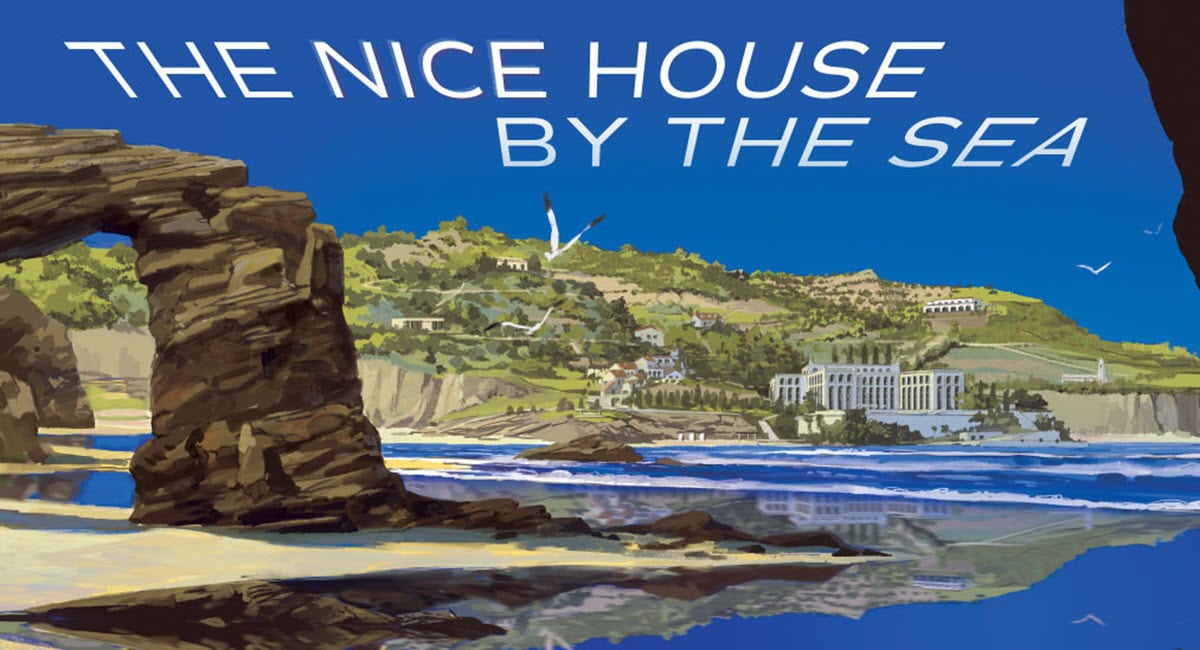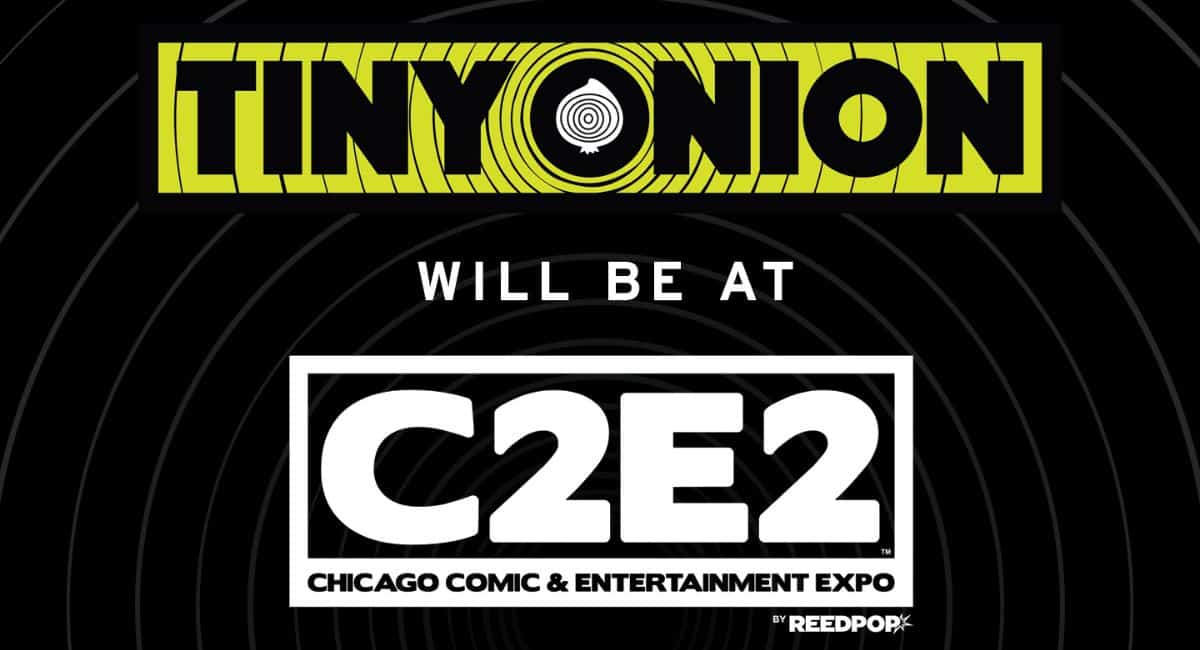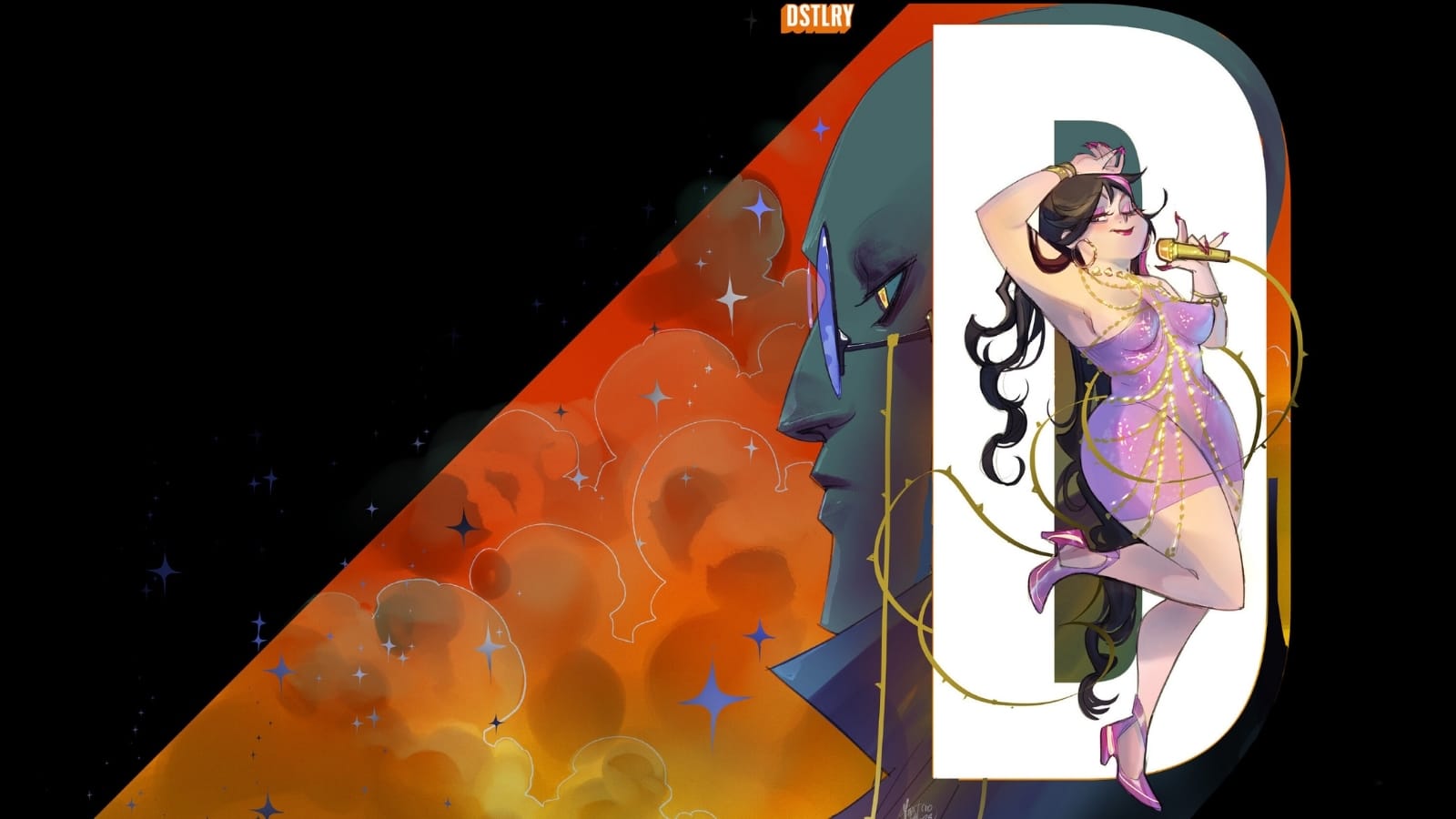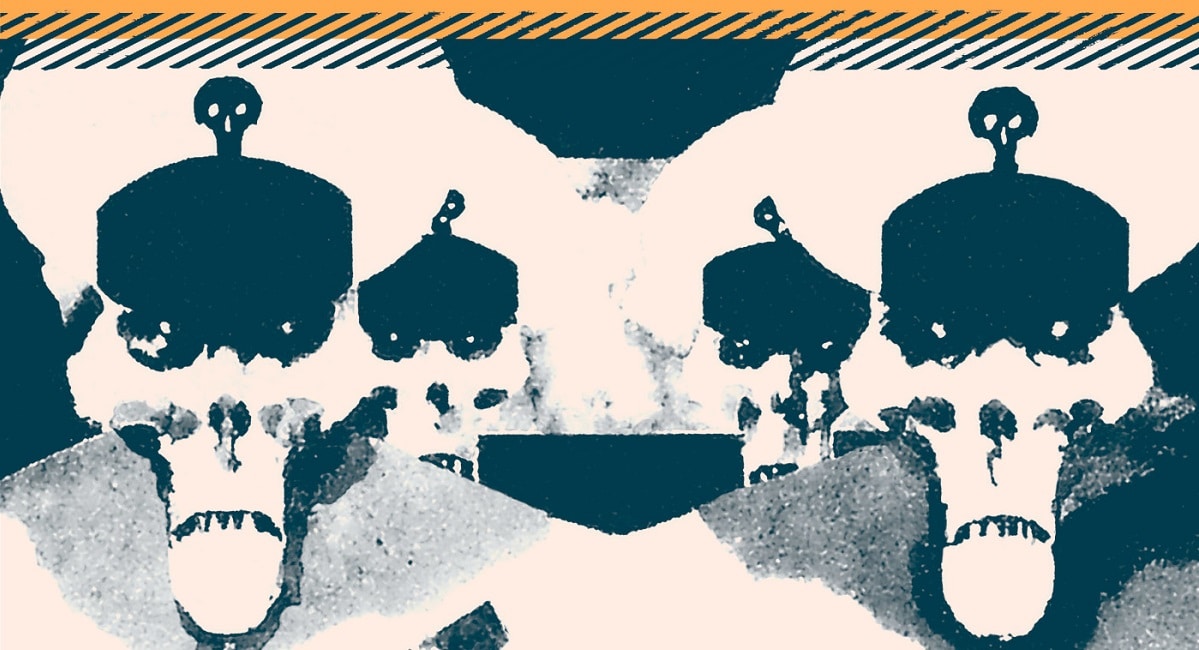 w0rldtr33 Vol. 1
w0rldtr33 Vol. 1
Writing: James Tynion IV
Illustrated: Fernando Blanco
Color: Jordie Bellaire
Lettering: Aditya Bidikar
Publisher: Image Comics
What’s scary about the new series, w0rldtr33, from Image Comics and Tiny Onion Studios is that it could happen to someone you know. Not the big scary naked lady stalking through town with the power of the glitch/hell undernet. But the radicalization. Horror is known for using larger than life metaphors to tap into a type of real fear in the social consciousness – whether that means using a Kaiju-like Cloverfield monster to represent the anxiety many Americans felt after the September 11 attacks on the Twin Towers, or The Babadook, which used a ghost-like monster to represent the lingering fear that grief will never end.
w0rdtr33 Volume 1 begins with a prologue that originally appeared in Image Comics Anthology #8, something I missed when reading through the single issues as they were being released. In the prologue, our billionaire tech mogul / hero-genius Gabriel gets a notification from w0rldtr33 – it’s started again, the violence. He quickly ends his work day and puts his assistant on paid leave before he sends up the bat signal (so-to-speak).
In a time that’s exceedingly easy to see graphic violence online accidentally, this story hits a particular vein of interest because on one hand it’s a story about getting the gang back together to fight the big bad. But on the other hand it’s a reflection of the way that young people of our generation (James and I are the same age) found online the morbid things they most wanted to see. Leading up to the release of w0rldtr33, James said, as part of the SKTCHD X Tiny Onion Studios interview series, “I really wanted to play with Y2K aesthetics, the turn into the millennium. That’s when I came of age. Just by remembering the pre-social media Internet and what I hoped the Internet would do to the world and then what the Internet has actually done to the world, I wanted to tell a story about that tension.” I vividly remember rotten.com and faces of death, and watching Hostel in a basement with one or two other people from my high school. Sharing links and photos and trying to get into weird corners of the internet, just to see what was there. And in a way it’s easy to look back on that time with nostalgia and think: yeah, I’m a little weird, but it turned out alright, while at the same time forgetting that for some people it did not turn out alright. This, I think, is the tension that comes across in w0rldtr33. It explores the different flavors of growing up online in a way that is both too real in hyper-violence and too real in humanity.
The first chapter of w0rldtr33 begins with a live-broadcasted murder spree, which is being carried out by the younger brother of one of our main characters, Ellison. After receiving a strange message from his brother, Ellison and his girlfriend Fausta are traveling to where he lives to try to intervene in whatever way they can. But, of course, they find out it’s too late. At the police station, where his brother is being kept, Ellison encounters for the first time our big bad naked lady, PH34R, as she tears through the station, murdering everyone, including Ellison’s younger brother. Then PH34R leaves Ellison there, alive.
In another section of the narrative, Gabriel calls an old friend to let him know that w0rldtr33 is active again and that they will need to get the gang back together. It’s here, for the first time, that we see also a hint of their younger selves in an amazingly nostalgic-feeling yellow and orange. The artwork, by Fernando Blanco, and color, by Jordie Bellaire, do so much to set the different tones of the story apart visually. Each perspective shift begins with a character name in big bold white letters, but it’s more than that. The past is almost autumnal, yellow and orange and a green-gray shade. The present is crisp and full spectrum. Then, eventually, we will see a dystopian-tinged future that is gray and washed out. In a newsletter for Tiny Onion, James said: “I keep thinking of it as my big horror novel. It’s a BIG story, a sprawling ongoing epic that if we do our jobs right, will run for several years, building toward a singular ending.” And in a way this is believable.
I am more of a Nice House on the Lake reader than a Something Is Killing The Children reader, which I largely attribute to the more adult-aged characters and themes of Nice House. But it also has to do with the closeness of the narrative. In Nice House, the story doesn’t feel infinite. It feels like the characters are particularly set in place to show themselves to the audience in a way that has an end. To me, w0rldtr33 feels that way as well, which is a little concerning as the introduction of the 2049 timeline (the washed out gray dystopia mentioned above), is first shown in the final chapter of this volume. But, if there’s one author who has shown that he can really hold it together and bring out some wild revelations, it’s James Tynion IV and the creators he chooses for his Tiny Onion projects.
So… Is this story for you?
If you grew up in the early, weird internet, where things felt like they were both right in the palm of your hand and also infinite; if you have a deep love for the stalking terror that is a big gory thriller; or if you read Nice House and thought: hmmm, that was super weird, than yes! This is an immediate purchase.
It is an extremely stressful time to consume media at the moment. So if you’re in a weird place with mass-violence, the internet, and the uncontrollable evils of the world… I might wait a bit. It’s not a comic that shies away from very real and terrifying depictions of violence. But it also has a purpose. It has real human people being impacted by real human violence, and I think that’s important to read sometimes. You just need to be in the right headspace.
Verdict: Buy
Read a new entry in the Trade Rating series every Thursday at The Beat.


